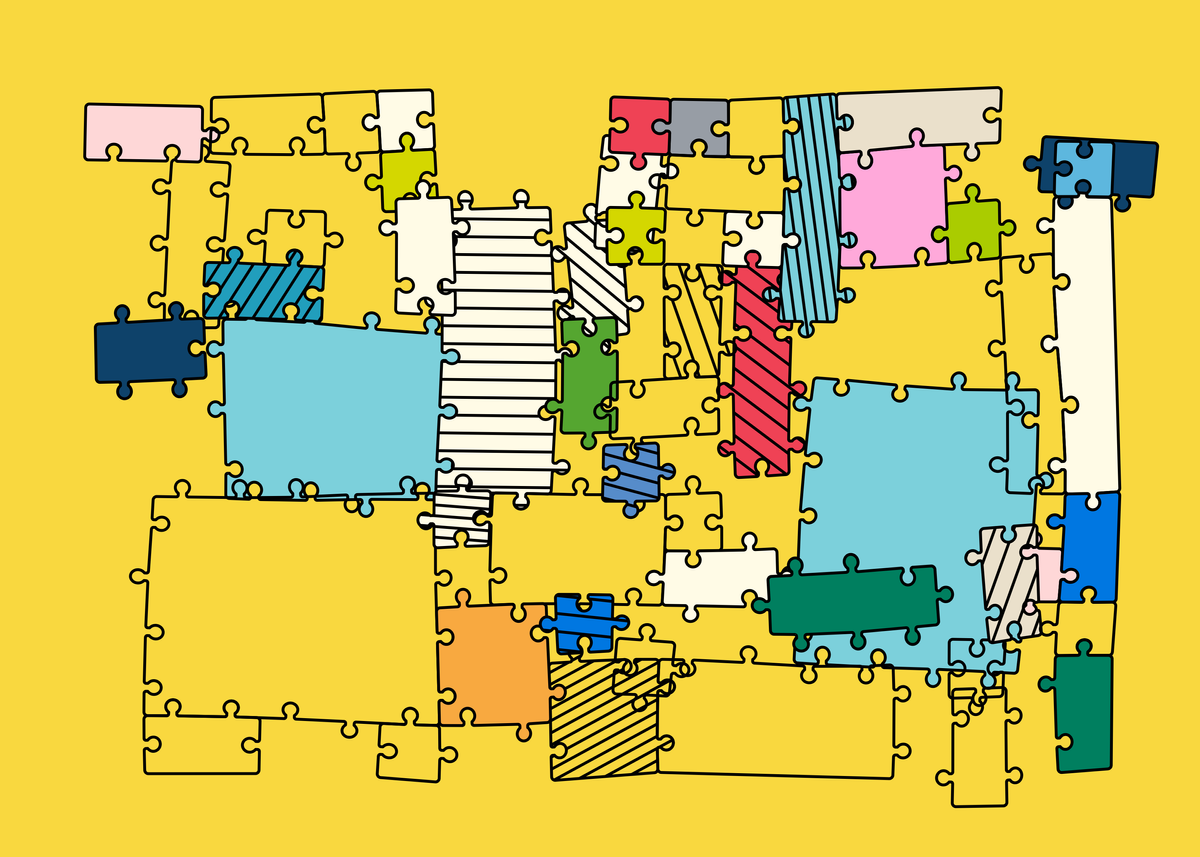Welcome back everyone 👋 A heartfelt thank you to all new subscribers that joined in the past week!
This is the 50th issue of the Gorilla Newsletter - a weekly online publication that sums up everything noteworthy from the past week in generative art, creative coding, tech and AI - as well as a sprinkle of my own endeavors.
Needless to say, we're reaching a major milestone with this 50th issue of the Gorilla Newsletter! It's incredible to see how far we've come, and I want to express my gratitude to everyone who's been a part of this journey, whether you joined last week or from the very beginning - it means the world to me that you read these updates every week! We'll stick to our regular format with this issue, but keep an eye out for a special celebratory article coming later this week!
That said, hope you're all having a great start into the week! Let's get straight into it! 👇
All the Generative Things
Conway's Game of Hope
Storytelling meets interactive tutorial in Spacefiller's digital fable titled "Conway's Game of Hope". Alex Miller brings to life a beautiful blend of Greek Mythology and Philosophy in form of a beautiful story that teaches you about Conway's famous Cellular Automata, the Game of Life:
Although Conway disliked the fact that the Game of Life became his most influential work, I truly believe that reading through Alex's fable would have most definitely made him reconsider his position towards the brainchild of his.
I cannot express how much I love what Alex has managed to accomplish with his writing - it's not just a tutorial packaged in form of a narrative; but the manner in which the elements of the story tie back into the computational concepts behind the famous Cellular Automaton, in an almost allegorical manner, and how it is symbolical of the incomprehensibly infinite aspects of the game... simply a masterpiece!
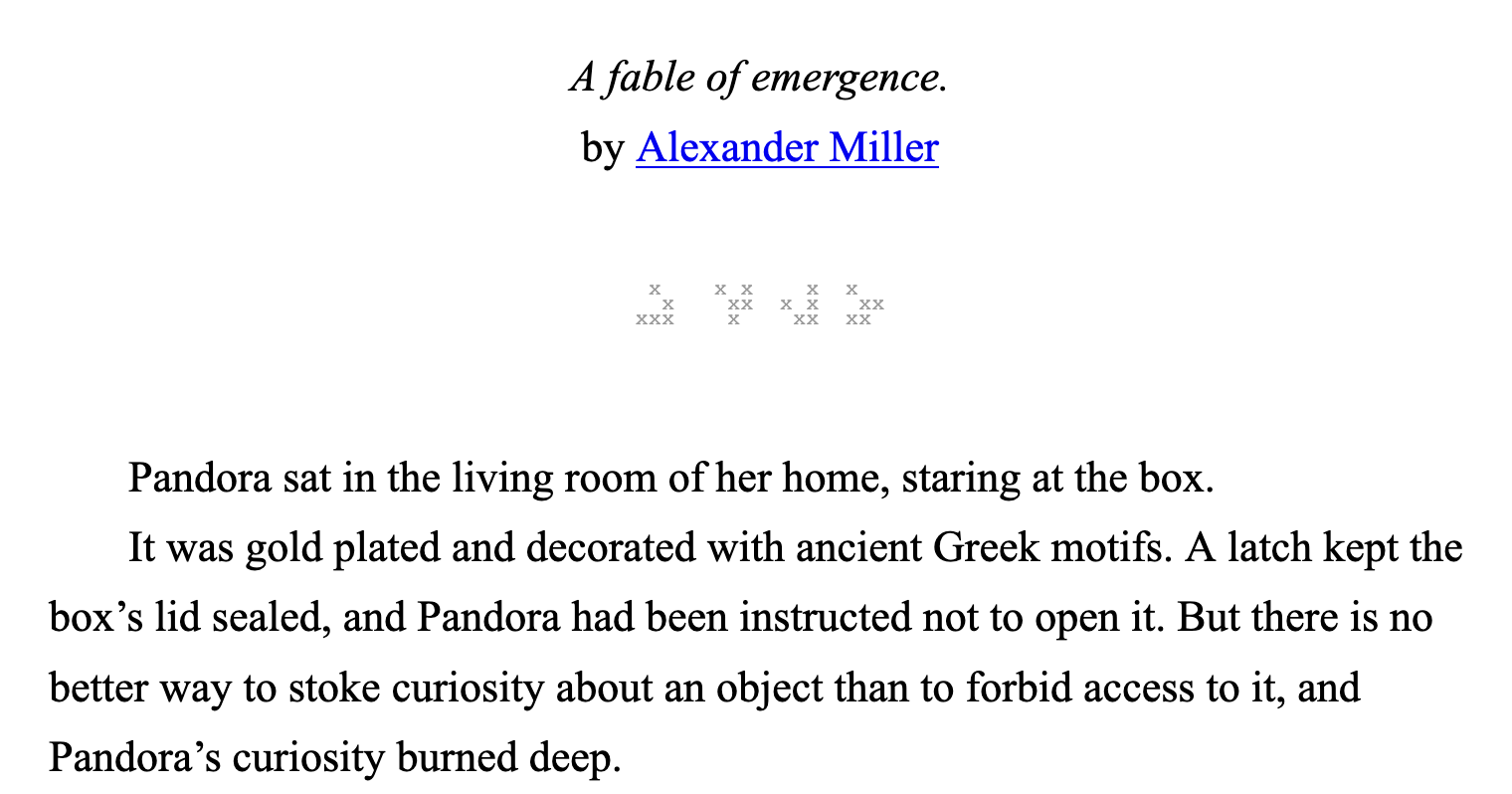
Thinking about the philosophical aspects of the Game of Life often triggers a feeling of existential dread within me; wand with the vastness of mathematics in general, will we ever be able to discover all of its secrets? While we have just recently proved that Conway's Game of life is Omniperiodic, there are still many mysteries that elude us.
If you're going to read one thing this week, I recommend reading Conway's game of hope. If you're interested in learning more about Cellular Automata, from a generative art POV, I covered this in more detail in issue 41 of the Newsletter. On this note, sometimes I really need to do my homework better - Spacefiller's interactive fable was actually part of the 3rd issue of the HTML review that I shared in last week's Newsletter - due to a lack of time I didn't manage to check out all of the showcase pieces, I'm certain that there's more than a few gems amongst them still.
Emily Xie on Textile as Personal Canvas
Look, I'm running out of ways to introduce Monk's articles... by now I probably must've written the phrase "This week, Monk's back with a stellar article..." on about 5 separate occasions - and yet again, this week, Monk's back with a stellar article. This time he's in conversation with Emily Xie, a generative and visual artist that you might better know through her groundbreaking Art Blocks Curated release Memories of Qilin:

Together they dive into the historically intimate relationship of textile works and machines; recounting how the Jacquard loom played an important role in the evolution of the modern computer as one of the first devices that made use of punch-cards. Moreover they also juxtapose and compare the analogue qualities of textile works with the sterile nature of machine art - and how Emily bridges between the two with her generative art.
I'll leave you here with an article about the Jacquard Loom, because it is fascinating piece of history:

Connecting Worlds through the Browser
A few months ago Bjørn Staal broke the internet with a viral Tweet of his, with over 10 Million views, it currently reigns supreme as the most viewed generative art tweet in history:
The tweet showcases an experimental artwork that transcends the browser window - in the literal sense of the word - to connect with another instance of itself in an adjacent one, such that the two particle blobs entangle with each other. I initially covered Bjørn's tweet in issue 32 of the Newsletter, if you're curious to learn a bit more about the technical aspects of the experiment.
So, how's a tweet from November 2023 news, Gorilla? Bjørn recently shared that he had done an interview with Fakewhale back in December prior to the release of his Art Blocks Curated project Immaterial. The interview completely flew under my radar, but I found it well worth re-sharing, since it focuses on some of the happenings that happened in the tweet's aftermath as well as Bjørn's perspective on them:
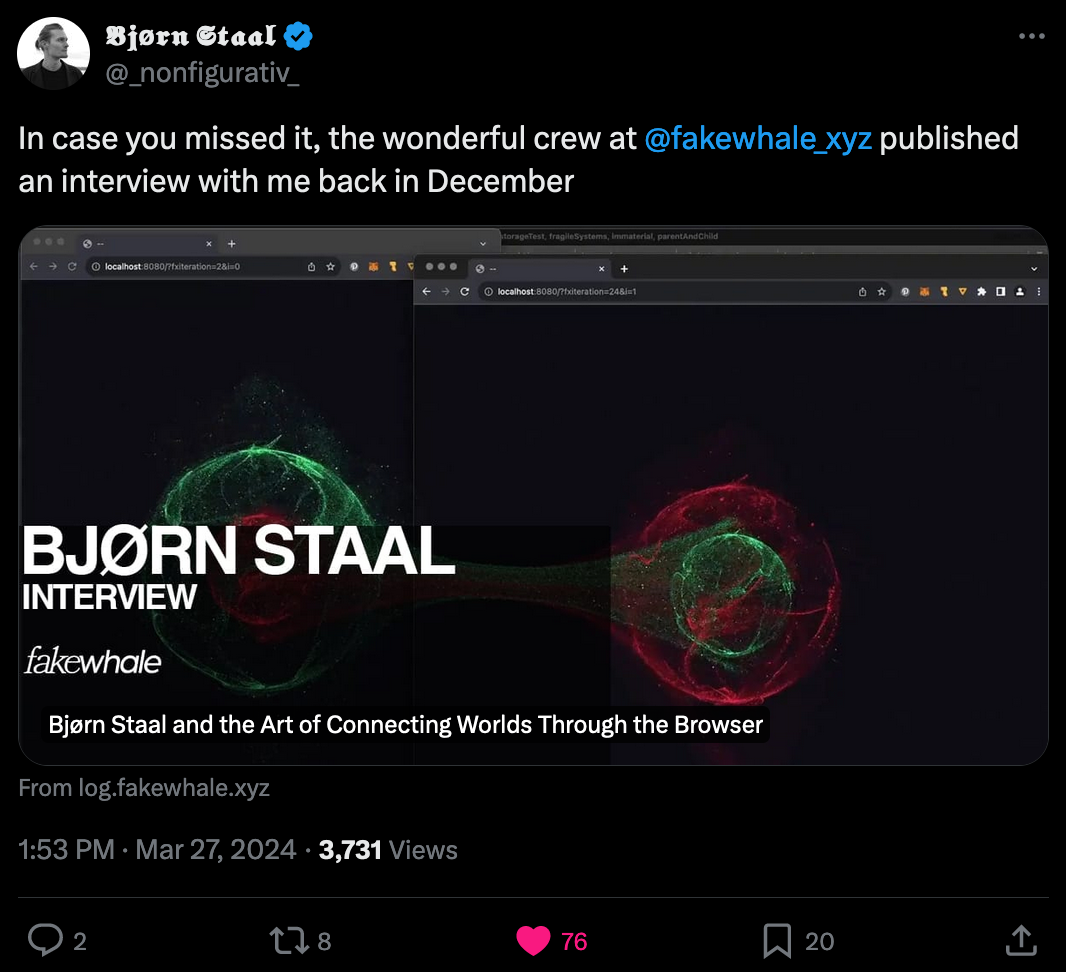
New considerations have emerged around open source culture; especially with the rising popularity of generative art and the monetization thereof, there's a noticeable bigger hesitance from artists to open source their projects' code - similarly to how a magician doesn't reveal his secrets, generative artists are less willing to share their tricks nowadays. Following the viral Tweet, Bjørn received many blunt requests asking directly for the source code behind Entangled - with the majority of them likely not genuine requests. In a humorous manner he did eventually make the code public. Bjørn comments on the matter:
I try to share code when I think it can be of value to others in a range of different contexts. [...] I think it’s amazing to see others rehashing concepts that I developed as long as I feel they bring something new to the table.
But it is an interesting issue, I see many interesting innovations and powerful algorithms come to life in generative art, especially in computer graphics, many of which will likely never be made public, which is a shame considering the educational value. This is in addition to Open Source culture already being in a precarious state, it quite often is a thankless job with little to no compensation - but who's to blame? We are victims of our own System - an interesting issue in that regard was the HashiCorp controversy from last year:

While we're on the topic of interviews — here's a thread that I started over on Farcaster where I asked folks to pitch their favorite generative art interviews; there were quite a few that I hadn't seen before, so if you're looking for some more reading material this week I recommend you check out some of the links people have left in the replies:
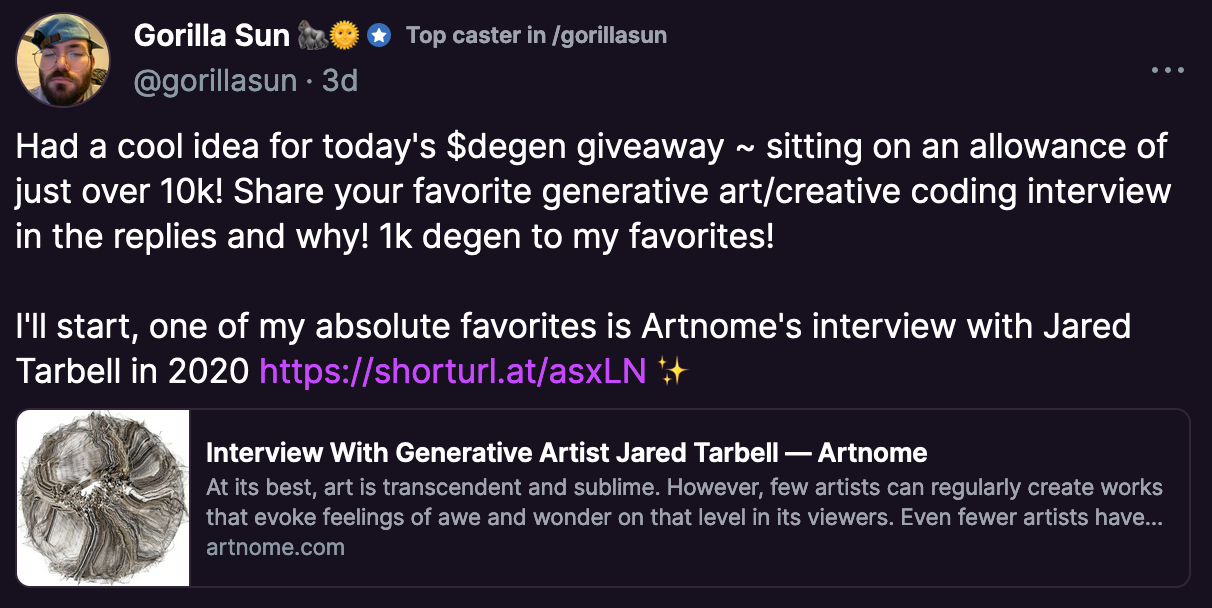
Rheotomic Surfaces
I've recently been exploring alternative coordinate systems, as a means to discover new kinds of shapes and patterns that I wouldn't otherwise come across so easily while working within the regular Cartesian coordinate framework. During my search, scouring Pinterest, I came across a number of interesting flow diagrams:

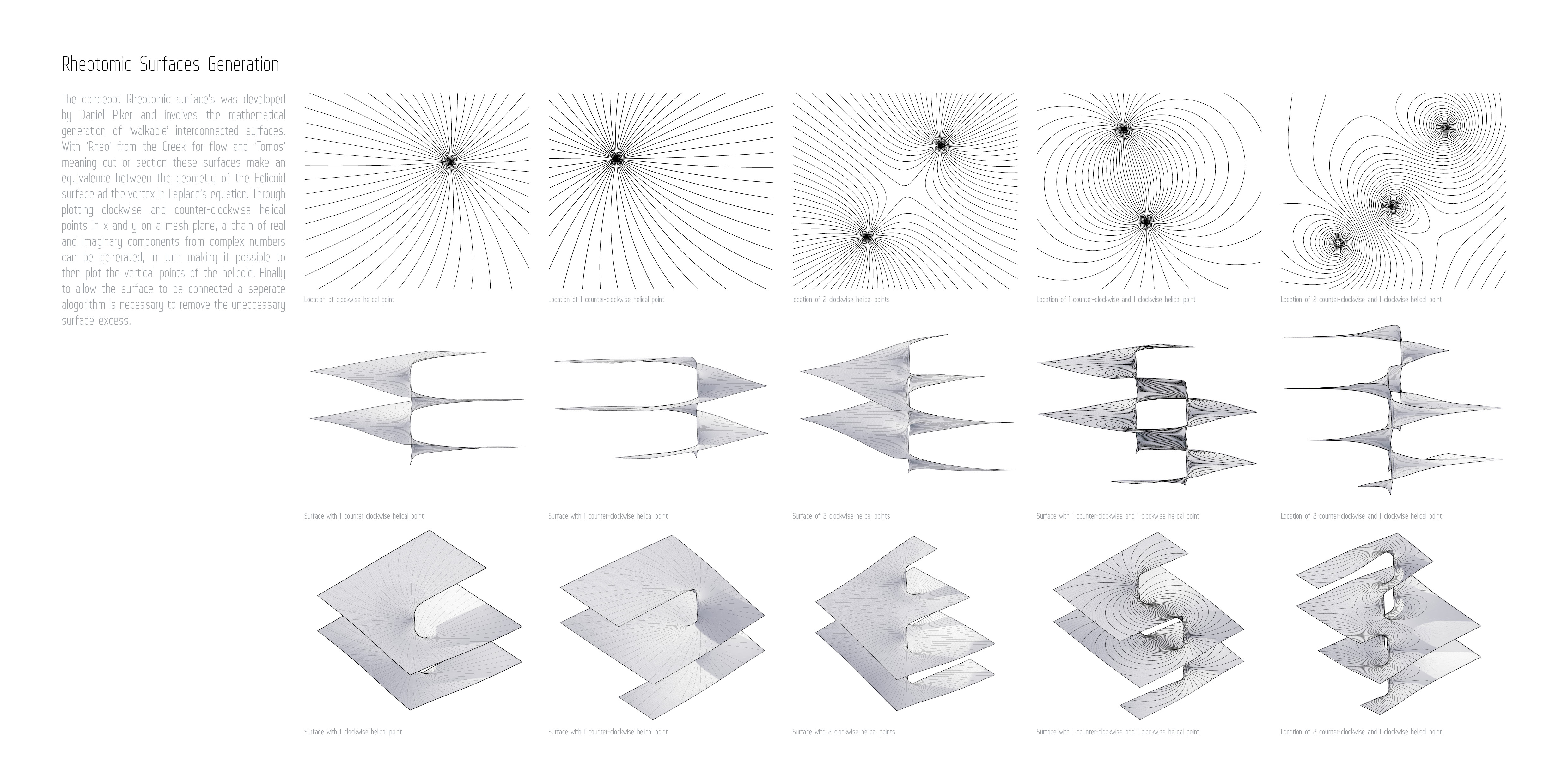
The diagrams linked back to articles about the notion of "Rheotomic Surfaces". Learning more about them, they are a type of mathematically generated surface defined by their “flowable” and “cut” properties. The name itself originates from the Greek words “rheo” which means flow and “tomos” which means cut or section. In simpler terms, Rheotomic surfaces are smooth, ‘walkable’ 3D structures that give rise to interesting 2D flow diagrams.
Daniel Piker discusses the mathematical concept in more detail in one of his articles, and explains how they find their way into Architecture; he references a work from the 1960s titled "The function of the oblique" by Claude Parent and Paul Virilio, where these kinds of structures are explored in a functional setting:
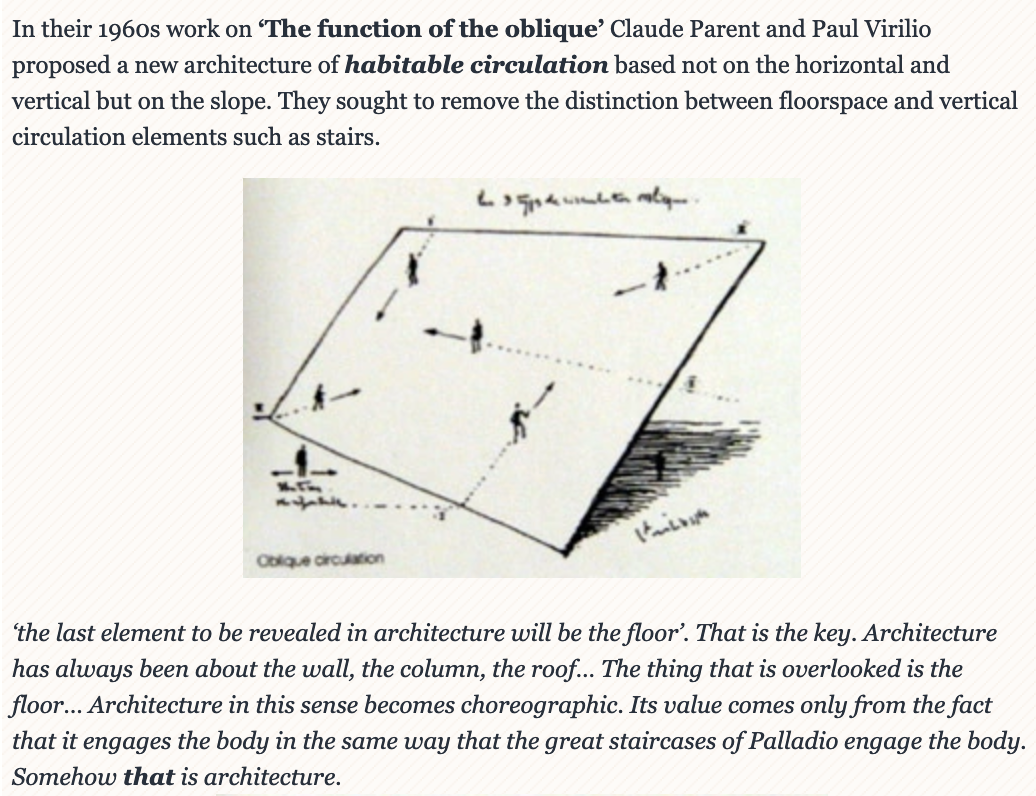
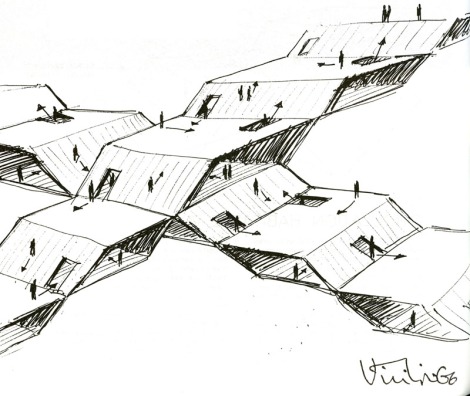
You can essentially imagine these surfaces as constructs in which traveling upwards and downwards between floors, is possible without requiring stairs - simply by virtue of the smoothly curved surface. Are they practical? Probably not. What about satisfying Feng-Shui requirement? We'll have to consult an expert on the matter.
While I was first drawn in by the generative aesthetics of the emergent flow diagrams, I found the underlying mathematical concepts and the philosophical approach to architecture equally inspiring. These surfaces also find application in fluid dynamics, but the Math thereof eludes me at this point.
Moebius-style Post Processing Shader
Maxime Heckel is back with another deep-dive, this time showing us how to code a post-processing shader that emulates the aesthetics of Jean Giraud work:
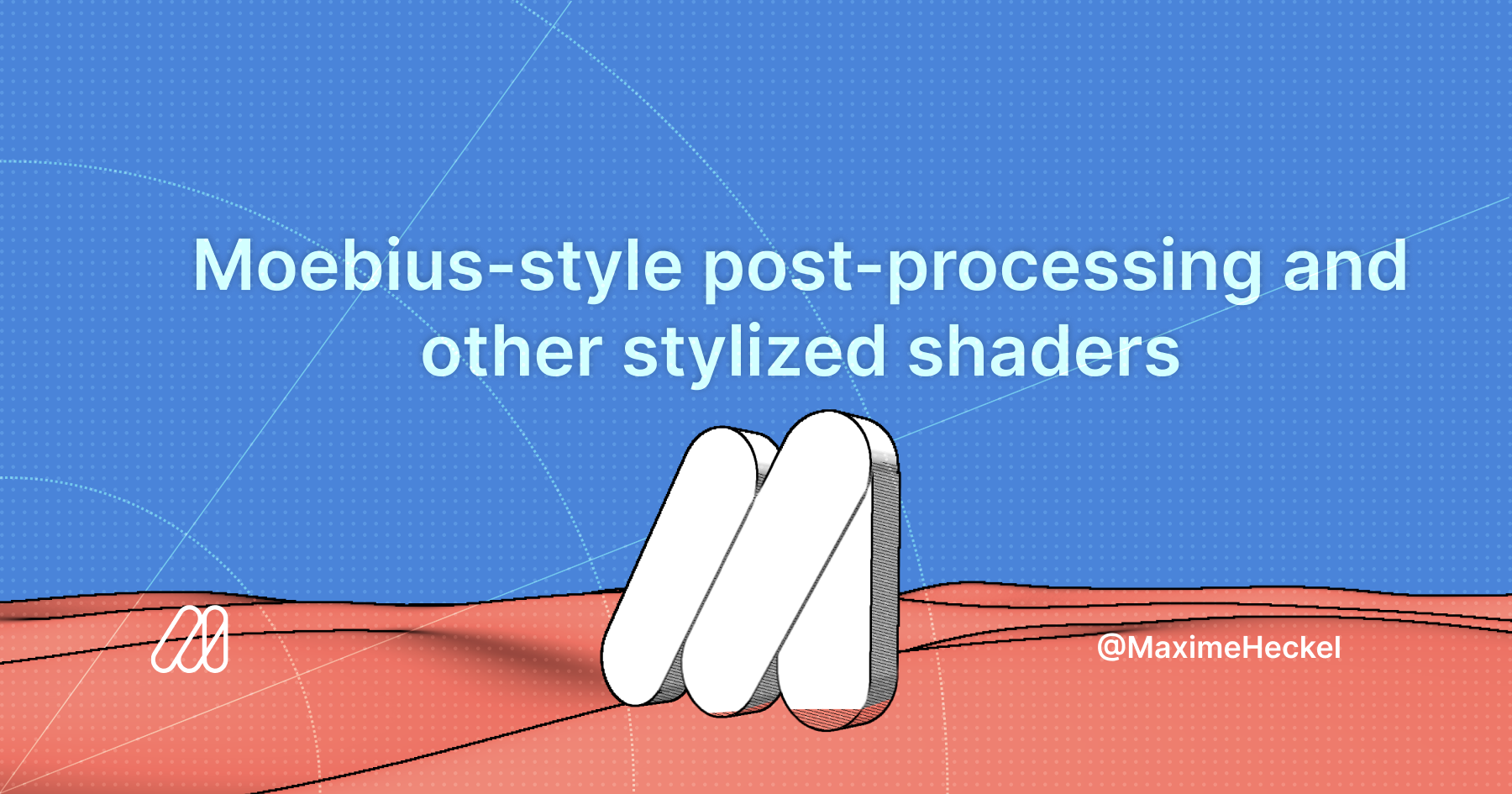
If you're not familiar, Giraud is famous for his fantasy and science fiction comics that he's created under the pseudonym of Mœbius - more specifically for his distinct drawing style:
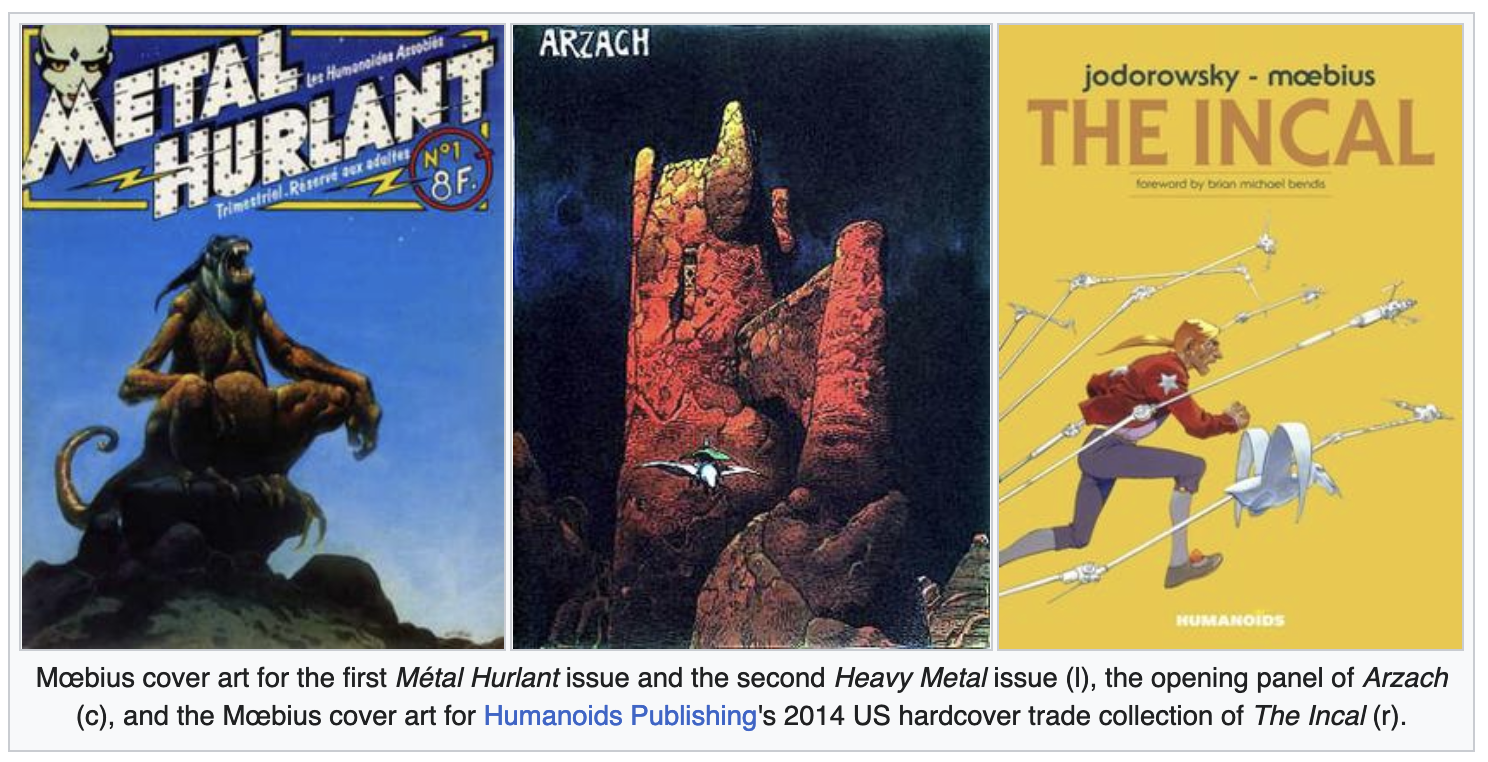
Maxim's article is inspired a video from Useless Game Dev, that also shows us how to recreate ta similar Moebius aesthetic in Unity:
Upcoming Group Shows + Fluffhead's Art Collector Corner
We've got a whole slew of group shows coming up in the next weeks - and it's been a bit dizzying trying to keep up with all of them. To preface this, I wanted to give a little shoutout to Fluffhead Chaser who's recently launched a new site, specifically geared towards helping collectors keep track of new releases:
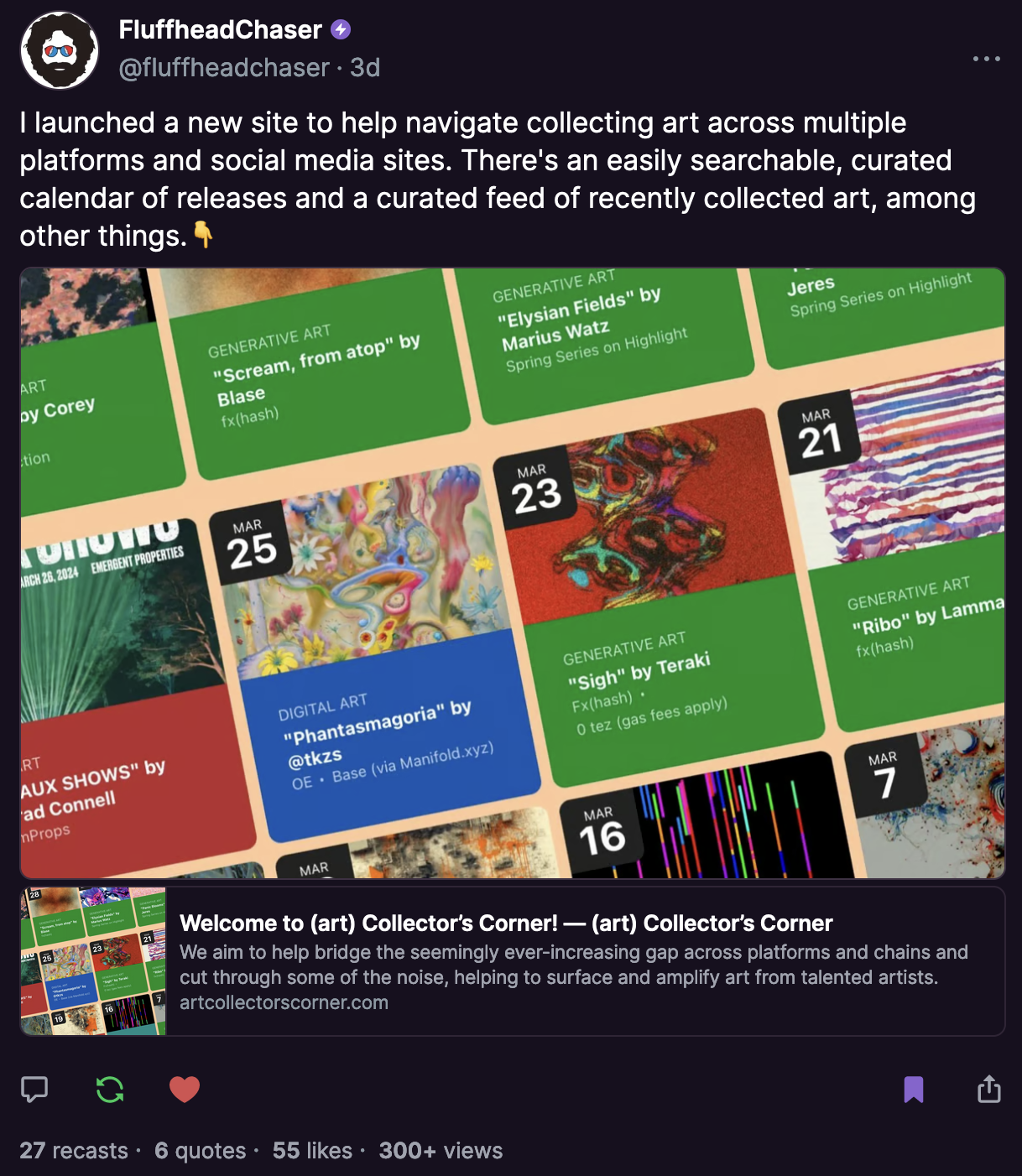
The main feature of the new site is a curated launch calendar that lets you filter through the releases on different platforms and blockchains. This way Fluffhead does the heavy lifting and adds new releases to the calendar whenever they get announced. Moreover, the design's clean and straight to the point, without any additional fluff.
I thought it was a great initiative, and I'll definitely be checking in whenever I'm putting together the Newsletter. I certainly have been missing out on a bunch of releases whenever my social feed decides to not show them to me. And that brings to the main topic of this section - some of the upcoming/ongoing group shows during April that I'm personally quite excited about 👇
Atelier's Visual Poetry
Following their first fxhash group show back in December of last year, the duo Pixel Symphony and Aether are back with another awesome line-up of artists. Based on some of the teasers that the participating artists have shared, the up-and-coming digital exhibition titled "Visual Poetry" will to a large extent revolve around generative approaches to typographic designs, emphasizing the visual nature of poetry:
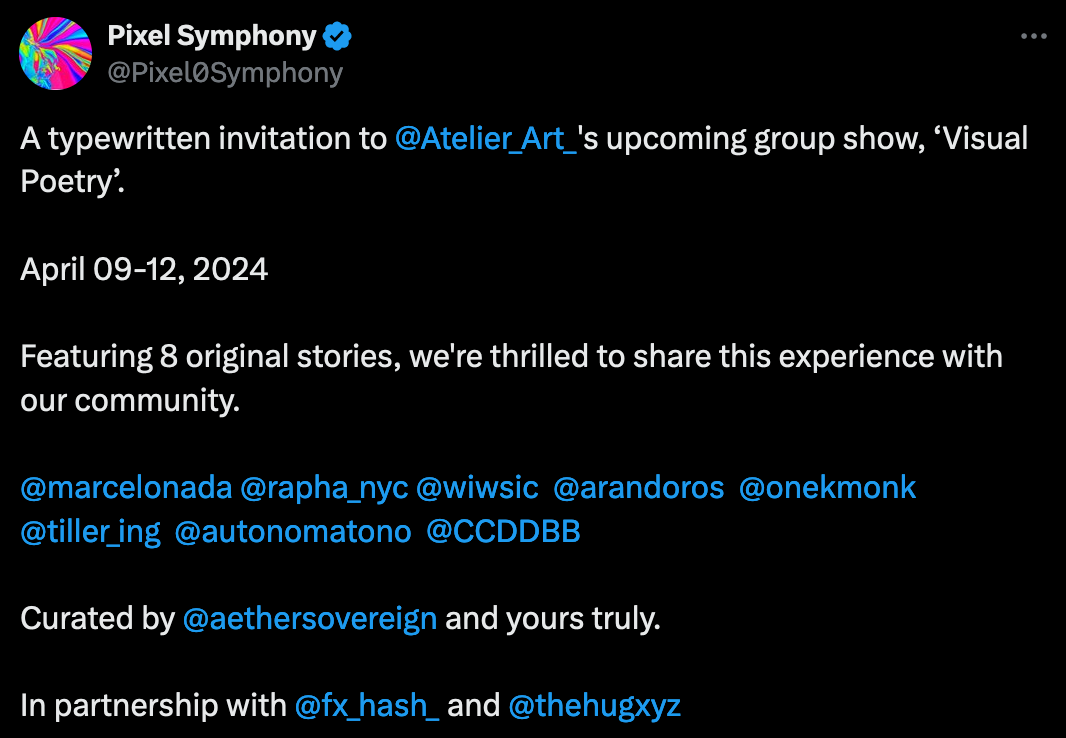
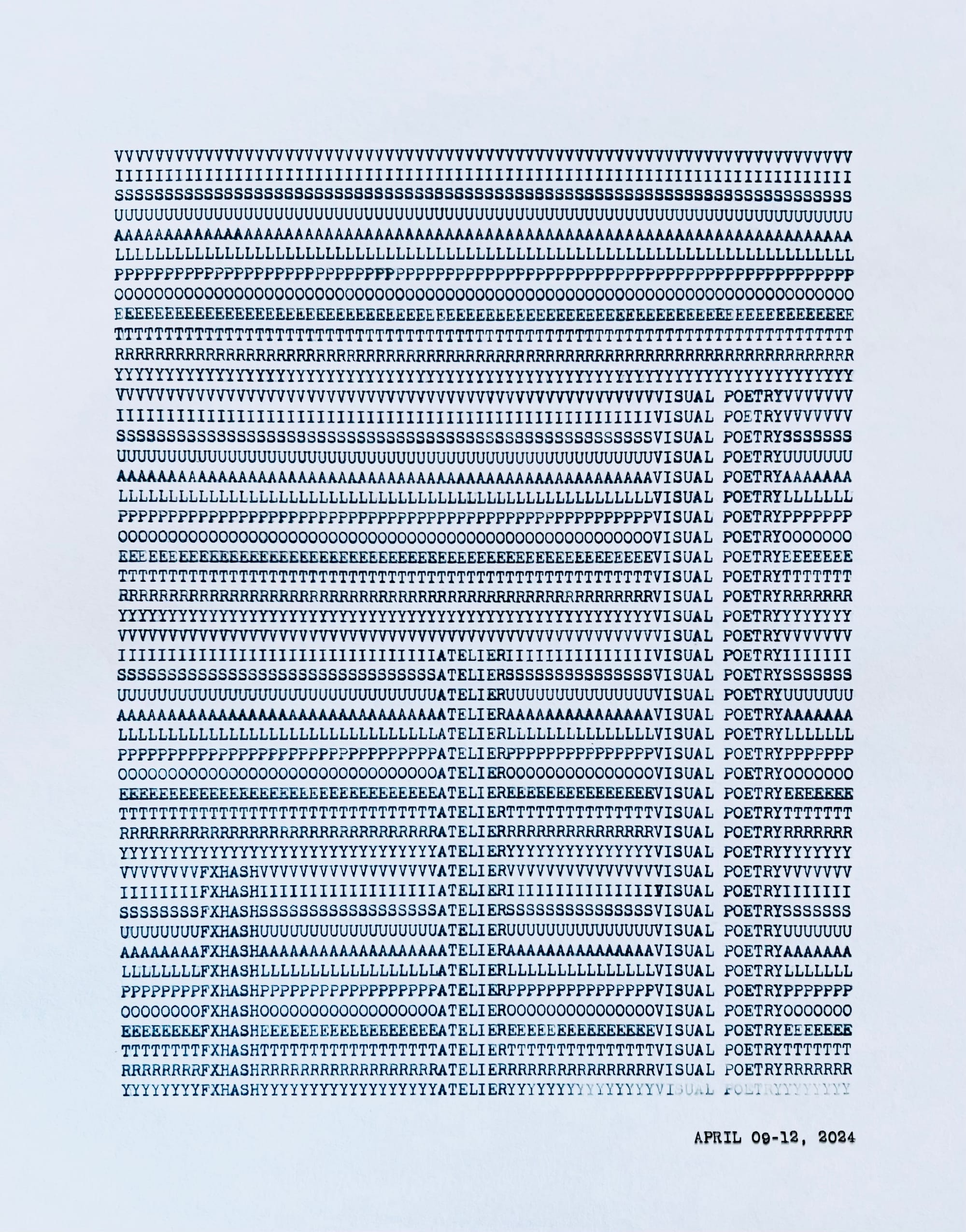
Poetry embodies a dual nature as an art form - certain artistic elements only truly flourish when spoken aloud, resonating throughout the sonic realm. Simultaneously however, it maintains an artistic visual essence on the page, encapsulated within its written form. This parallels code art - the code that is working behind the scenes is in many ways as artful of a creation as the graphics that it conjures to the digital canvas. In that manner code-art also has such a dual nature.
This is why I found the topic of Atelier's show really interesting, I'm excited to see all of the works once they're released. A couple of interviews have also been published over on Atelier's site, if you're curious to learn more about some of the artists that are involved:

Make sure to mark your calendars - Atelier's group show is bound to start on the 9th of April over on fxhash.
Let it Flow by Alba
Launching concurrently to Atelier's, Alba announced their next group show "Let it Flow" for the 10th of April - as you might've already guessed from the title, this time it's going to be all about our beloved flow field:
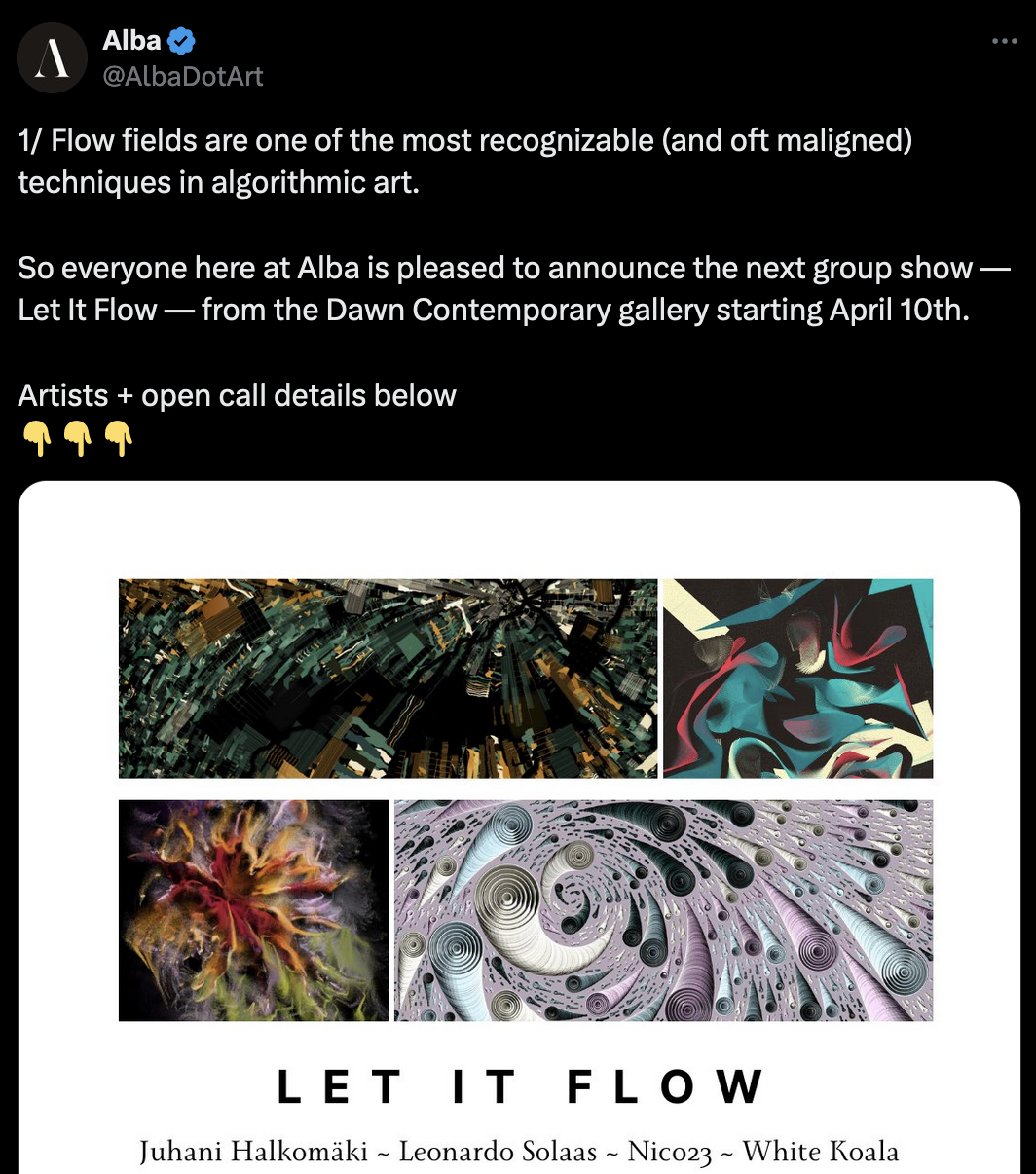
If you've dipped your toes into generative art you're likely familiar with the notion. And by now, flow field type sketches have become somewhat clichéd - it's a technique that is often explored by beginners.
The story behind why this is the case, is actually quite an interesting rabbit hole - or maybe it's just a theory of mine - but I would dare to say that flowfields wouldn't be as popular as they are if Processing and P5JS hadn't made the conscious decision to include Perlin noise as a readily available part of their software toolkit; Perlin noise being a common method to achieve the flow field aesthetics. Historically, the backstory here is a bit longer though, so maybe in another post.
As for the projects that will release on Alba, they are in no way cliché, from what I've seen in some of the teasers they all successfully put a fresh spin on the concept. I'm especially looking forward to Juhani's piece, since I'm a big fan of his!
TEXTScape Group Show on Zora
This one isn't entirely generative art based, but some cool generative artists are participating in it such as Julian Hespenheide, Pixelfool, and ertdfgcvb (if you're not familiar, "ertdfgcvb" is the artists' name, I didn't just have a stroke on my keyboard). And who doesn't love ASCII Art?
I recommend checking out some of the pieces and supporting the artists, they're quite affordable.
Farcaster: here for the long run?
It's been absolute madness over on Farcaster - a big wave of internet friends are currently in the process of leaving TwiX behind - for good - and joining the new and budding decentralized social network.
My concern is that the generative art community is becoming more and more fragmented, many have already left Twitter in favor of Mastodon back in 2022 when the first talks about Elon's takeover emerged - a good portion of those that have switched over never turned back to TwiX, and I can't blame them for it.
Then with Threads launching, we saw another such wave of people jumping ship - and the same thing is happening again with Farcaster. The difference right now with Farcaster is that it genuinely has a lot more to offer than the other platforms, especially when it comes to the needs of generative artist.
The current debacle revolves around the hyper financialization of the platform that's mainly due to the inherent tipping mechanism of the platform that is happening via the DEGEN token. If you want a quick catch up of the situation, I recommend checking out Kaloh's post on the topic:

In a nutshell, DEGEN is a digital token that is currently being distributed for free via an interesting allowance mechanism, that lets people tip each other simply via a specific reply command.
Naturally, the financial incentive is currently a big driving factor in on-boarding new users and fueling the platform with constant activity - but what happens once the taps run dry, and it's back to simply being a social network? Sure it will still be a social platform with Web3 superpower, but will that be enough to retain users in the long run?
Tech, Web Dev, and AI
Optimizing Javascript
Usually I'm not a big fan of list articles, you know, the kind that's something like "10 tips to optimize your JavaScript code" or "10 things you didn't know about JavaScript" - it usually is the case that they provide little to no value if you're not an absolute beginner. The optimization tips in this article by romgrk article however, were quite insightful. romgrk provides an expert analysis of how the JavaScript runtime engine actually processes our code and even goes as far as providing benchmarks for each one of the tips:
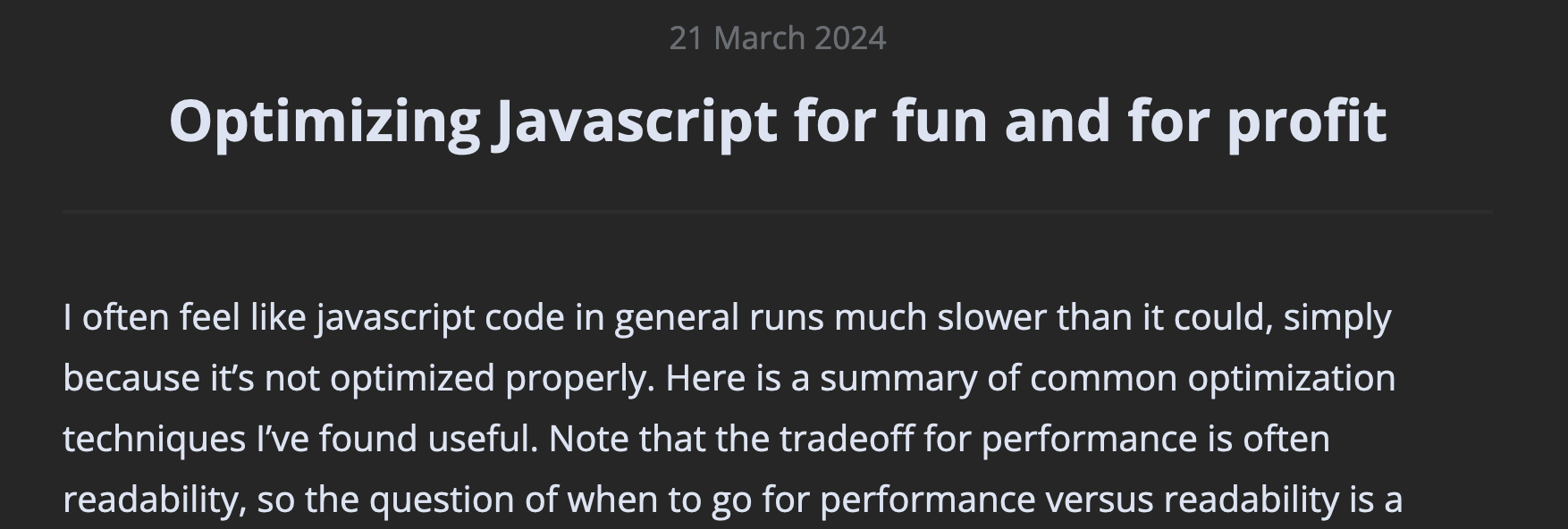
Although it's no news to me that declarative programming is in fact much slower than the imperative approach, one thing that I genuinely didn't know before was that the shape (the structure and property order) of your JavaScript objects can have an impact on performance:
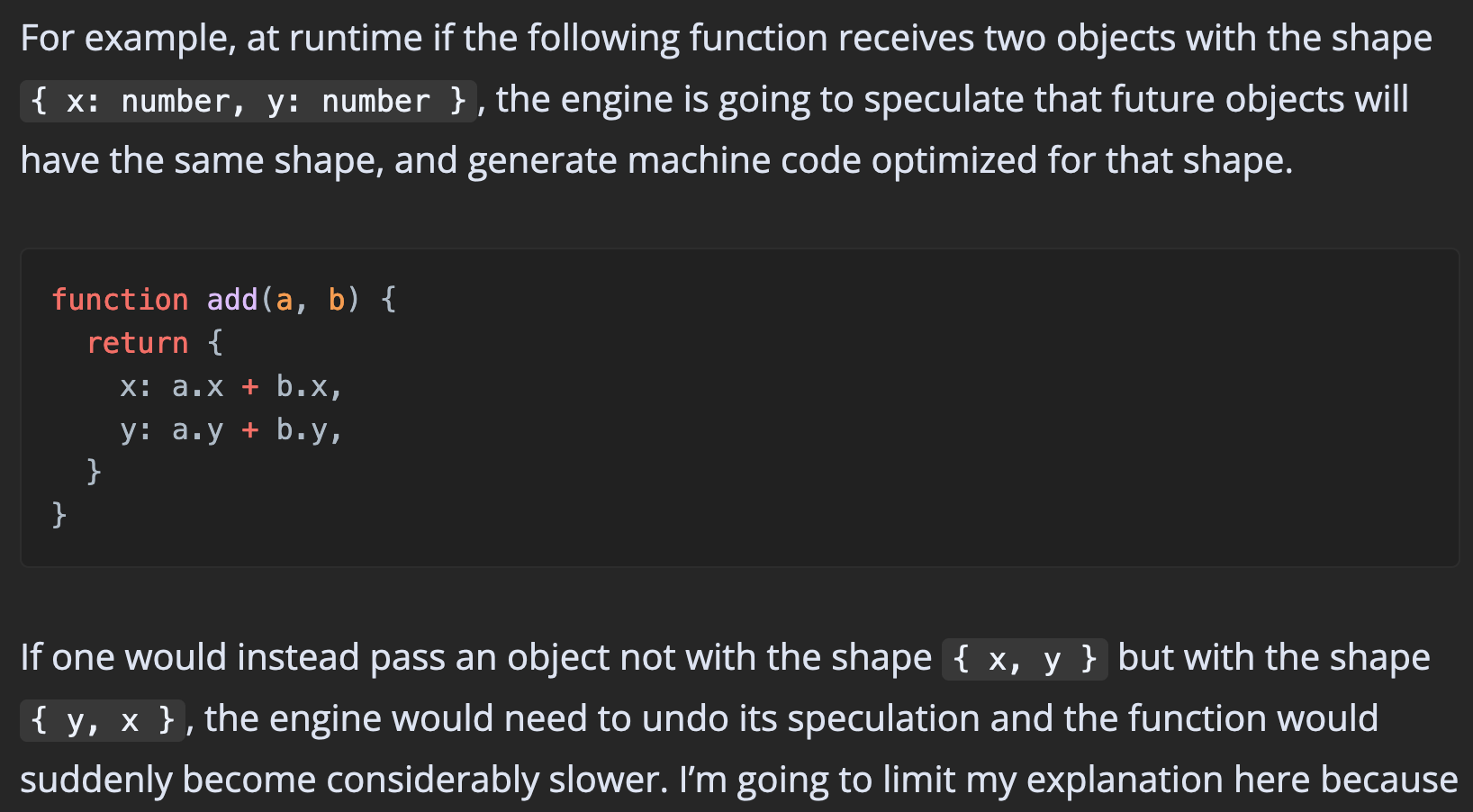
Why is that the case? This is related to the notion of monomorphism, not in the setting of Object Oriented programming, but from a code structuring POV - an iconic article that rmgrok metions is by Aleph from quite a while ago:

Coding games like it's the 80s
Back in the 80s, if you wanted to play video games you had to program them yourself. Conveniently there was many a book and magazine then that outlined the code for specific games. With her YouTube video, Kari takes us back in time and shows us what it was like to program one of these games on the Sinclair ZX Spectrum:
Towards the end of the video Kari points out that Usborne, the publisher of these books actually uploaded many of these over on their website making them freely accessible in PDF format. I recommend checking them out, even if you just briefly flip through them, the books themselves are in many ways eye-candy:
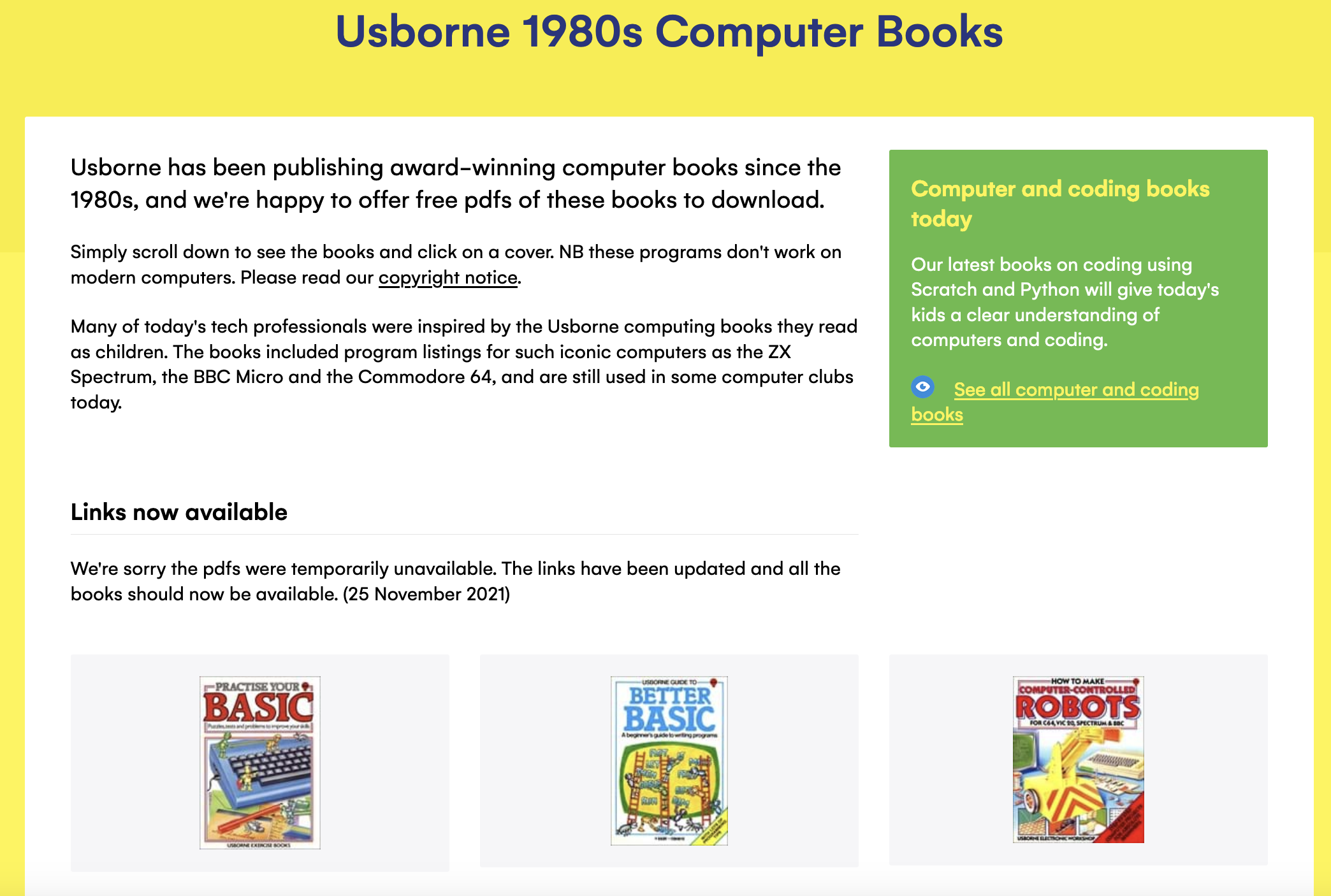
20 Years of Gmail
Exactly 20 years ago today (1st of April) Google launched their mailing service. What people assumed would simply be an April Fool's joke by Google, since they offered much more than the competition at the time, turned out to become the main email provider used around the world - in 2024 it has over 1.8 billion active users. The Verge recounts the story of it all, not only how it has become an official communication channel, but also in many ways a sort of digital record for people's lives and identity:
/cdn.vox-cdn.com/uploads/chorus_asset/file/25357916/247048_Gmail_20_Years_1750_NLittle.jpg)
I remember creating my first address - quite late all, things considered - back in 2012 (I just checked actually, it was the 10th of May 2012). I remember making it so that I could sign up to Facebook and hang out digitally with all of my friends after school. I don't use that particular address that often anymore, with an inbox that's telling me I have 18 thousand unread messages (mostly marketing newsletters and spam) I should maybe at some point go through it and archive the important ones in an external hard drive.
Gorilla Updates
Find me on Hypersub
For all of you folks that are currently exploring Web3, I've got an exciting announcement to make: last week I launched my very own Hypersub!
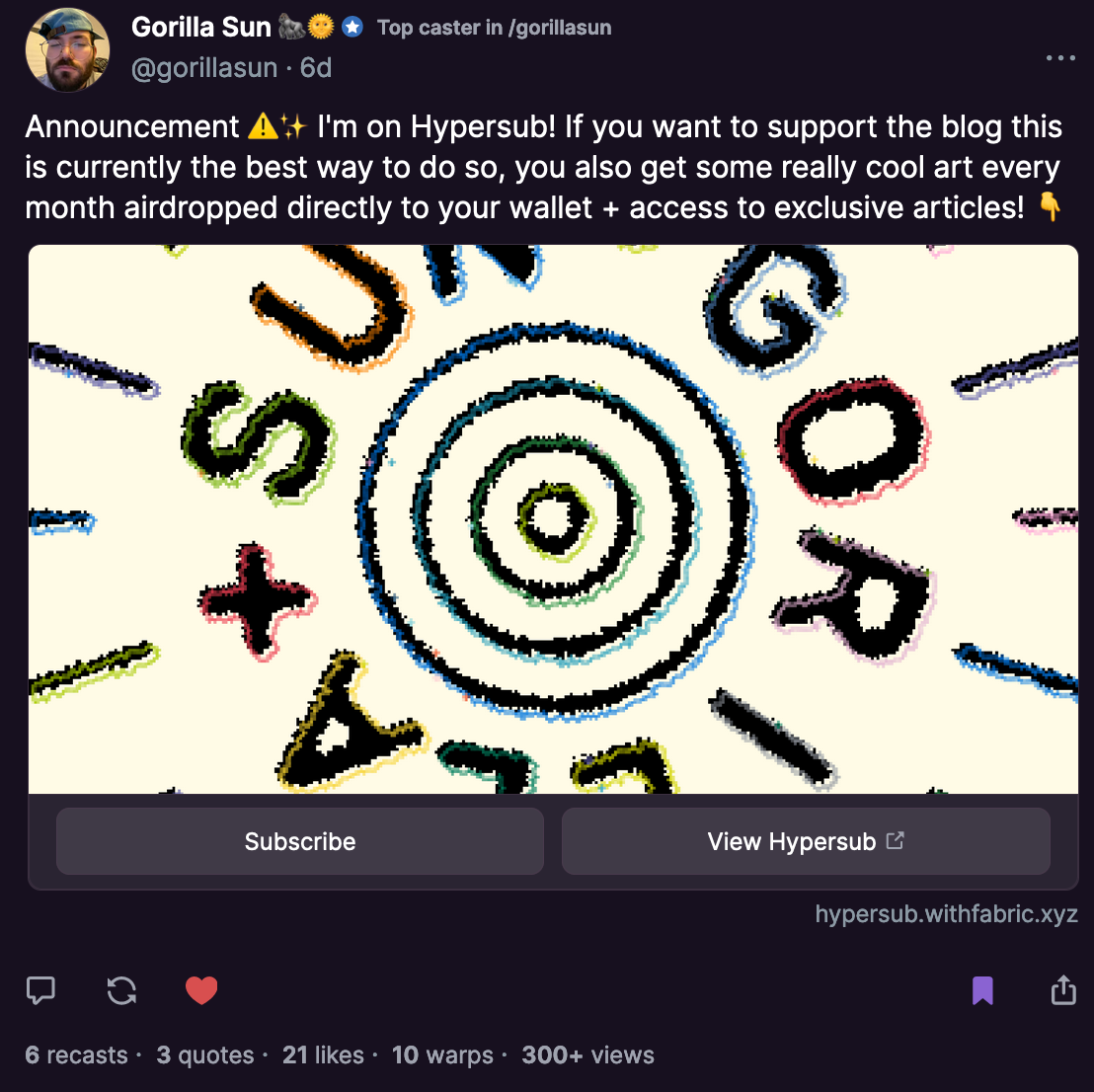
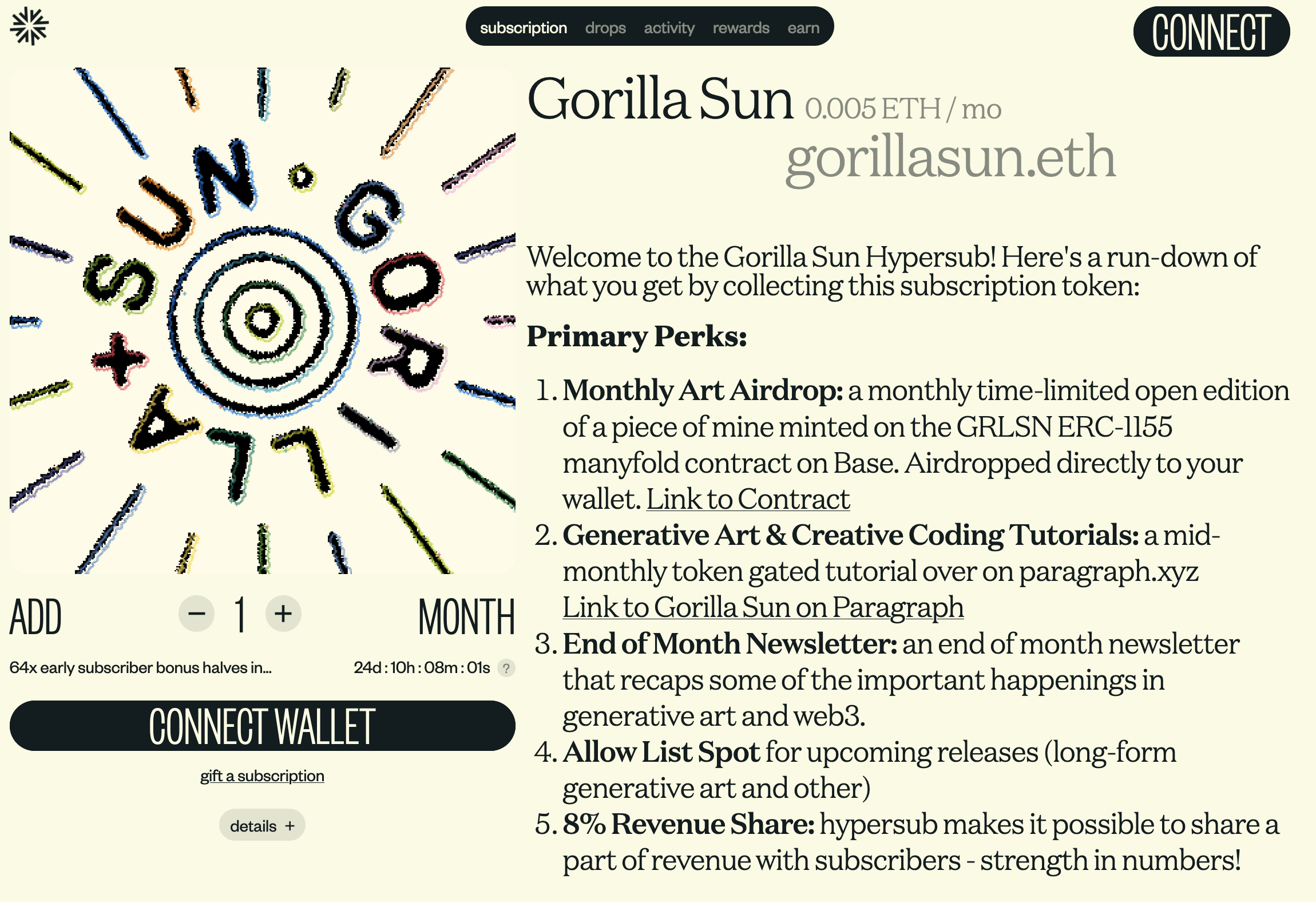
What's Hypersub, you ask? It's basically like Patreon, but in a decentralized format. It lets creators mint a subscription token that supporters then can collect to get access to some perks (perks are basically like Patreon rewards). In my case, these perks come in the form of Airdrops and token gated content over on paragraph. Airdrops are simply digital art tokens sent directly to the wallets of subscription token holders. Here's one of the tokens that I'm sending out this month - you might remember it from last week's Newsletter actually:
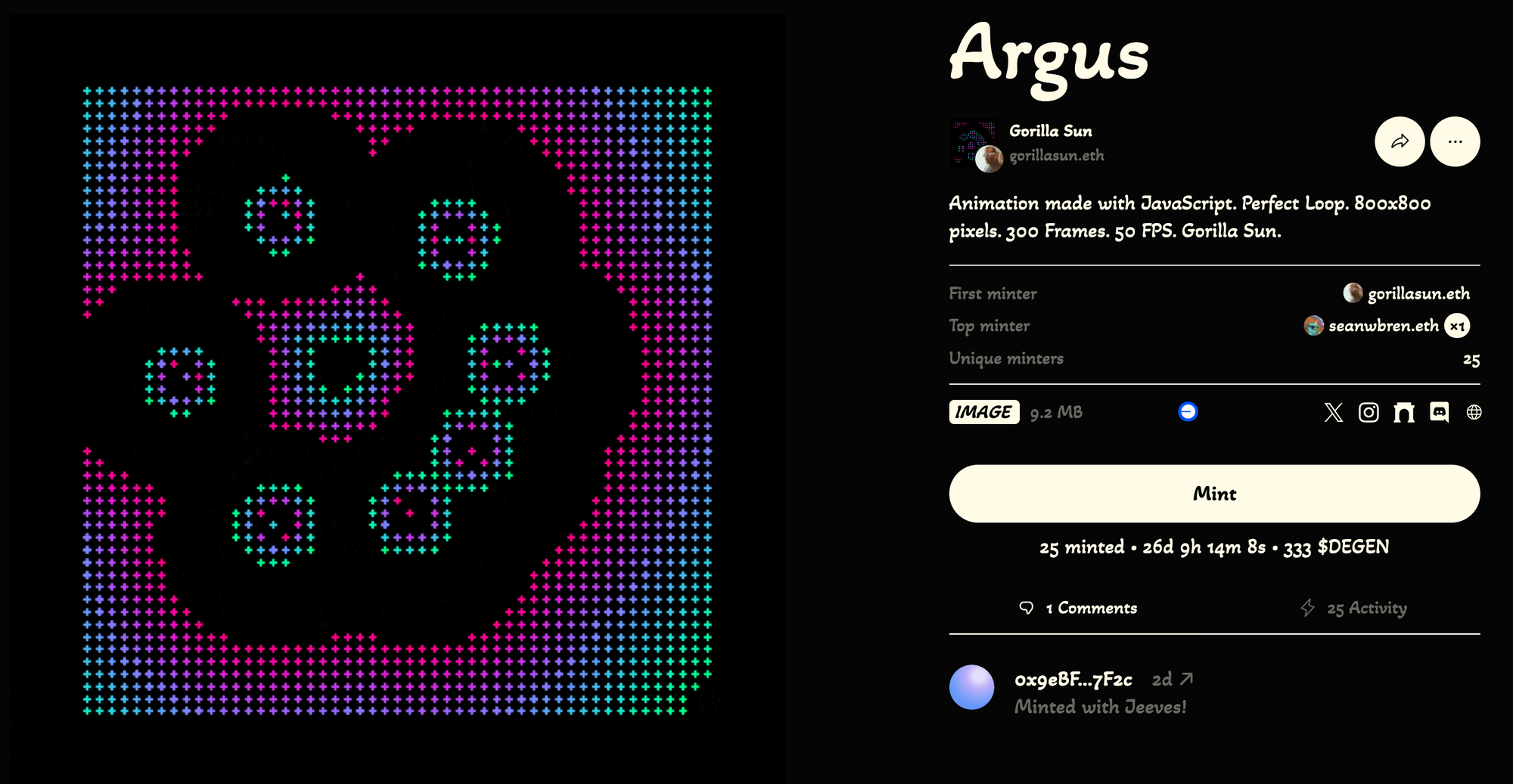
Besides these airdrops, I'm also offering access to exclusive pieces of writing published over on paragraph, which makes it possible to token gate content. A token gate is essentially a decentralised version of a paywall - in a nutshell, if you hold the subscription token you can read the exclusive articles. I actually published the very first one just yesterday evening:
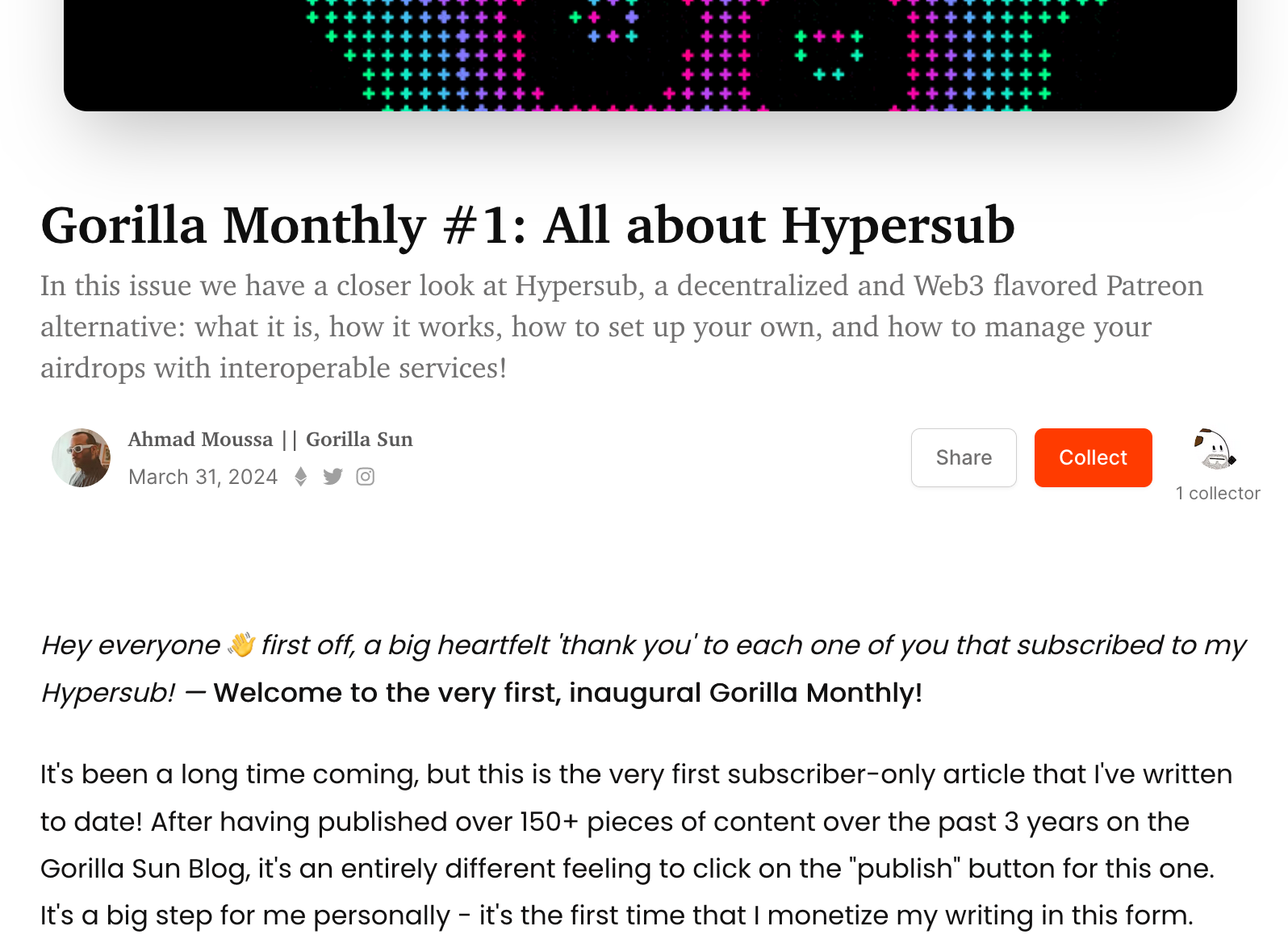
No worries though, I'll bring all of these articles over to the blog - that is, once I finish the revamp. I knooow, it's taking a long time... but it's very close now! I can sense it. At most 2 more months!
Reading all of this back to myself, it might be a lot to take in - what implications does this announcement have on the Newsletter? None! Nothing's going to change with the Newsletter, it'll resume going out every Monday sometime around noon CEST, with the same content format. If you're interested about the stuff that I just wrote about but Web3 stuff is still new to you, you can reach out to me and I'd be happy to chat - either via my socials or email, but preferably my socials.
On that note, I've also been having a lot of fun over on Farcaster, more and more of my genart friends have joined the platform in the past week. Launching my Hypersub I also decided to start a channel of my own for all Gorilla Sun and generative art related things:
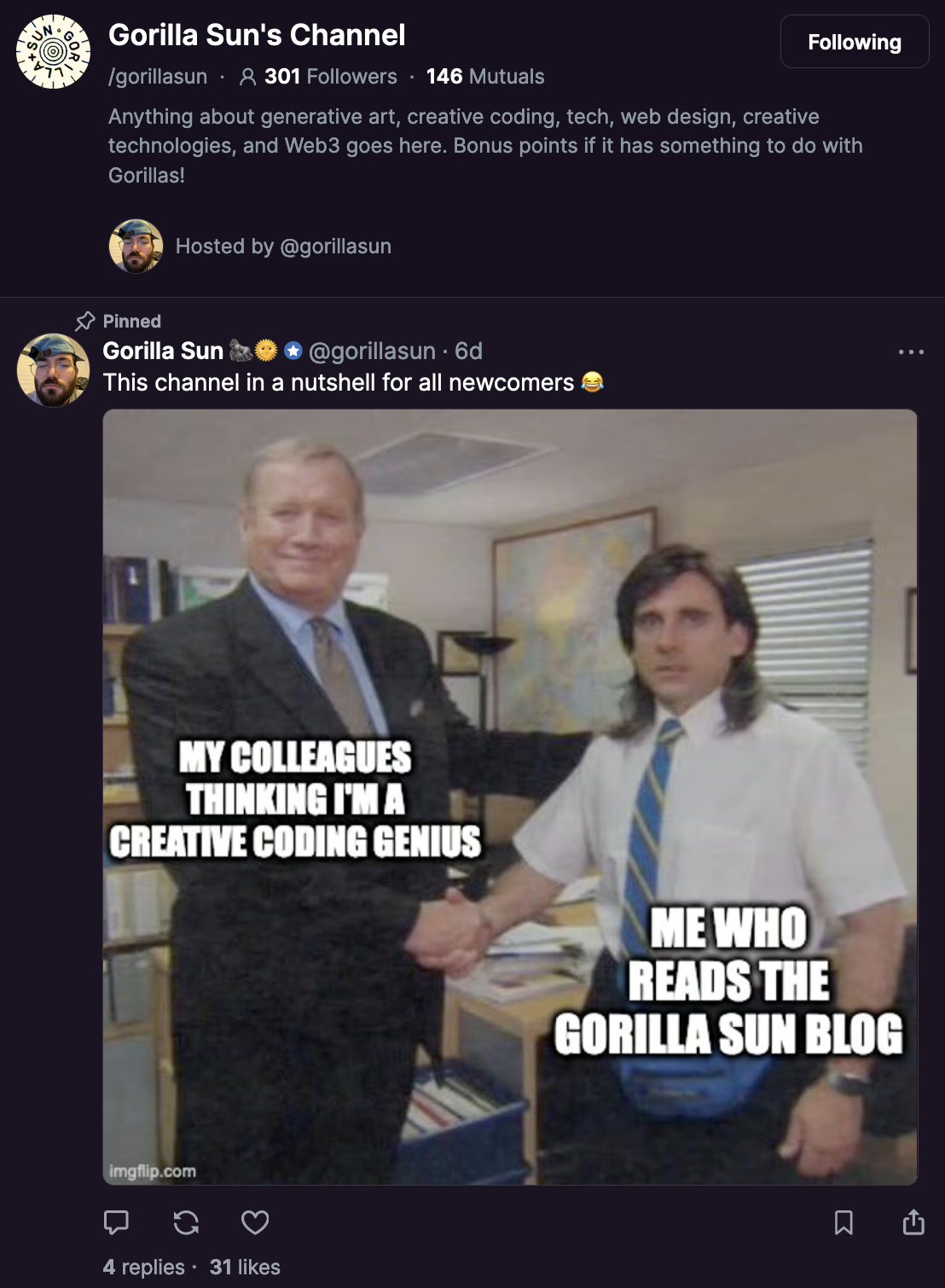
If you're on Farcaster, come by and say hi!
Music for Coding
Remember the Pyromaniacs game from the early 80s? Me neither, because it never existed - but it's OST is very real! Heavily inspired by the Shadowrun games for the Sega Genesis, Slowerpace crafted a fictitious sound track for a game that never was - also making use of the original art for the album cover:
That's it from me this week, hope you enjoyed this week's curated list of generative art and tech shenanigans - now that you've made it through the newsletter, you might as well share it with someone that you know who might enjoy this kind of content - sharing the newsletter is one of the best ways to support it!
If you've read this far, thanks a million! And if you're still hungry for more Generative art things, you can check out the most recent issue of the Newsletter here:
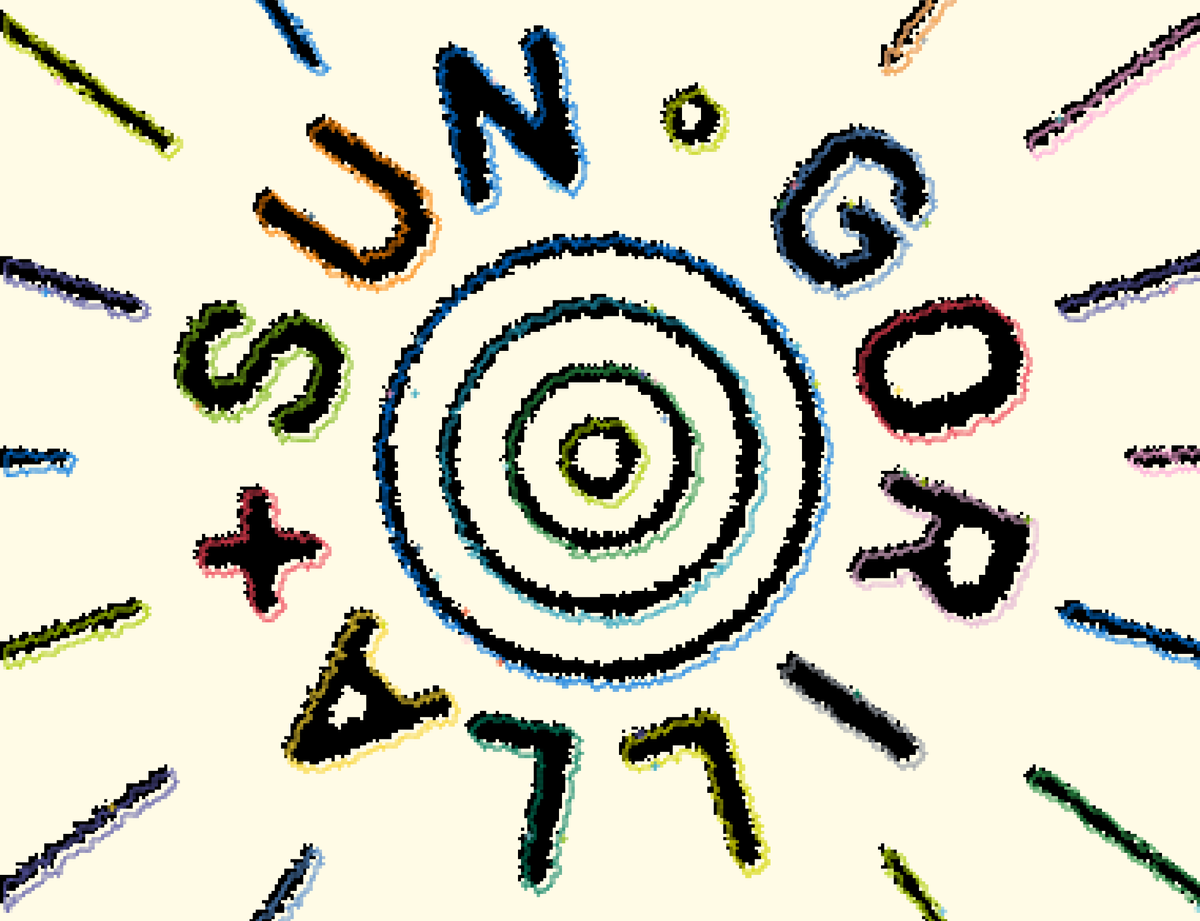
And if that's not enough, you can find a backlog of all previous Gorilla Newsletter issues here:
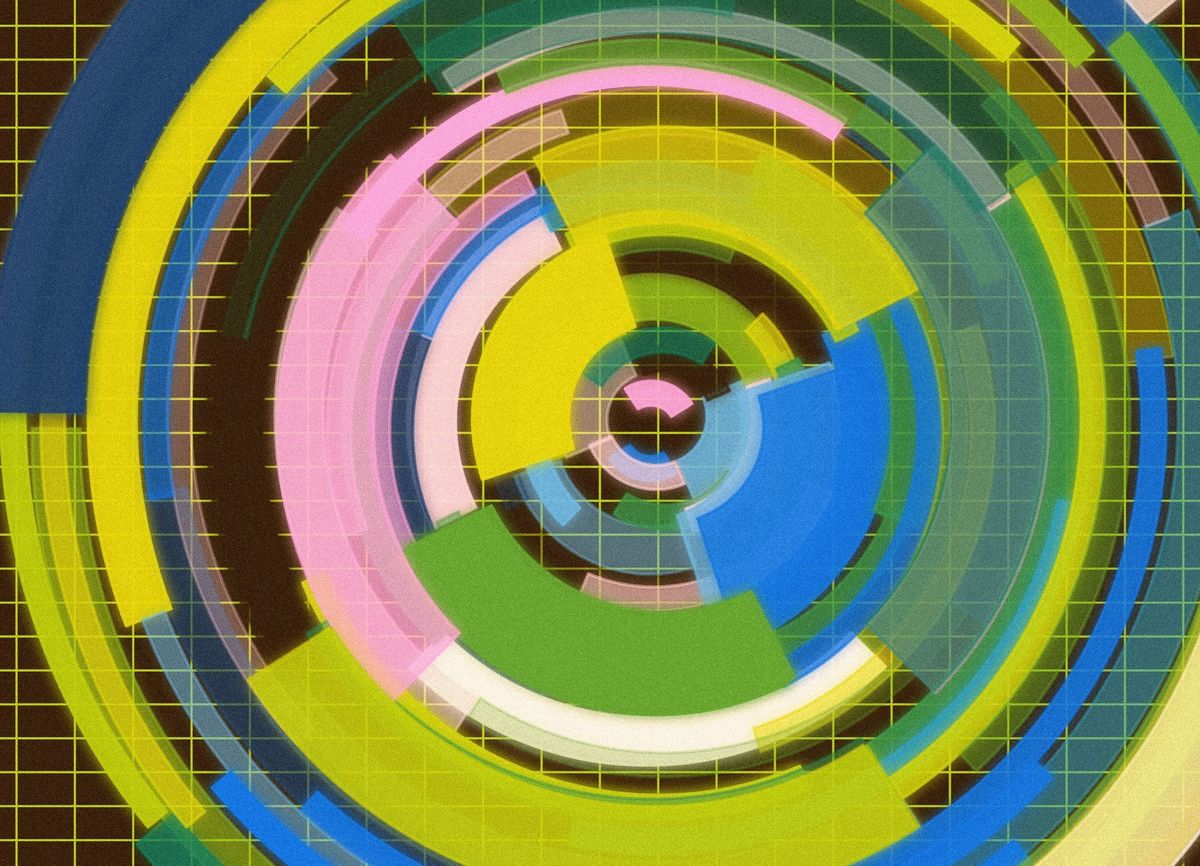
Cheers, happy sketching, and again, hope that you have a fantastic week! See you in the next one - Gorilla Sun 🌸 If you're interested in sponsoring or advertising with the Newsletter - reach out!
